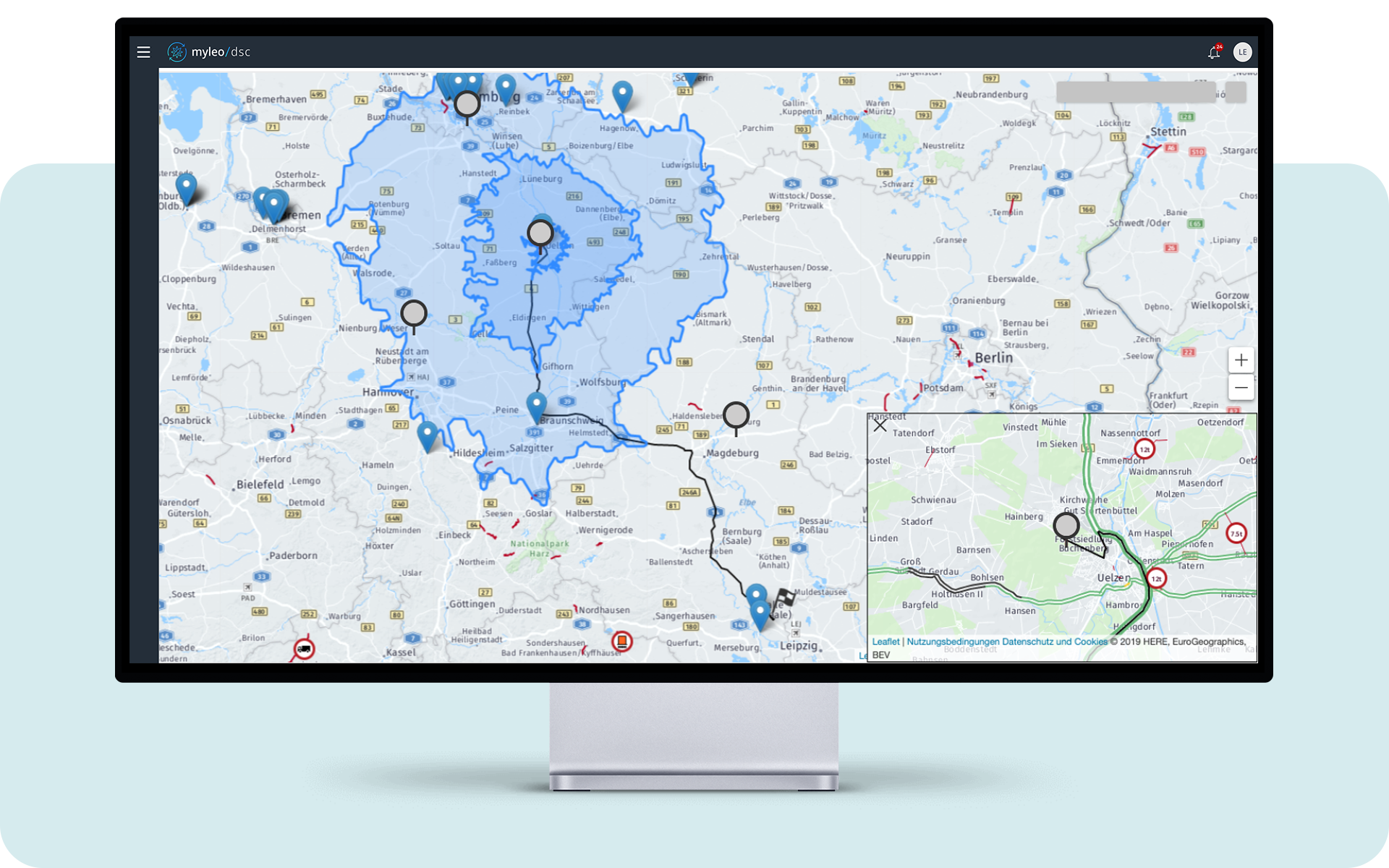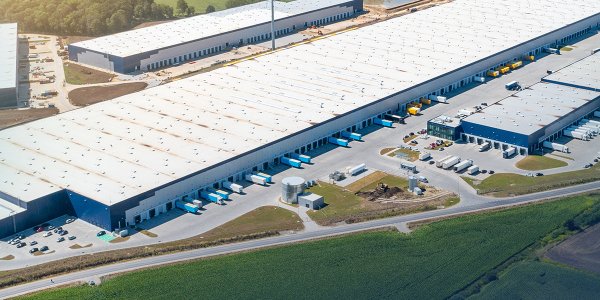Real-time transportation visibility refers to the ability to track and monitor the movement of goods and shipments in real-time, from origin to destination. It provides supply chain managers and logistics professionals with up-to-the-minute information on the location, status and estimated time of arrival (ETA) of their incoming shipments, taking into account traffic conditions, weather and so on.
In the context of inbound logistics, real-time transportation visibility is crucial for ensuring the efficient and timely delivery of raw materials, components, and finished goods to manufacturing facilities, distribution centers, and retail locations. By having complete visibility into the movement of their inbound shipments, businesses can optimize their supply chain operations, reduce costs, and enhance customer satisfaction.
The benefits of real-time transportation visibility in inbound logistics are numerous:
1. Improved Operational Efficiency: With real-time visibility, companies can streamline their inbound logistics operations by anticipating potential delays or disruptions and taking proactive measures to mitigate their impact, such as costly production downtime. This enables better coordination between various stakeholders, such as suppliers, carriers, and receiving facilities, resulting in smoother operations and reduced downtime.
2. Cost Reduction: Real-time visibility allows businesses to identify and address inefficiencies in their supply chain, leading to cost savings. For example, by having accurate ETAs, companies can optimize warehouse labor and yard management, reducing the risk of incurring additional expenses like detention or demurrage charges.
3. Enhanced Customer Satisfaction: In today's competitive business environment, meeting customer expectations is paramount. Real-time transportation visibility enables businesses to provide accurate delivery information to their customers, fostering transparency and trust. By proactively communicating any potential delays or issues, companies can better manage customer expectations and maintain high levels of satisfaction.
What is Real-Time Transportation Visibility?
Real-time transportation visibility refers to the ability to track and monitor the movement of goods and shipments in real-time, from origin to destination. It provides a comprehensive view of the entire supply chain, enabling businesses to know the exact location, status, and estimated time of arrival (ETA) of their inbound shipments at any given moment.
The key technologies enabling real-time transportation visibility include:
1. GPS Tracking: GPS devices installed in trucks, containers, or individual packages transmit precise location data, allowing for accurate tracking of shipments en route.
2. Internet of Things (IoT) and Machine-to-Machine (M2M) Communication: Sensors and connected devices embedded in vehicles, containers and cargo transmit real-time data on location, temperature, humidity, shocks and other environmental conditions, providing a complete picture of shipment status.3. Application Programming Interfaces (APIs): APIs enable seamless integration and data exchange between various systems and platforms, such as transportation management systems (TMS), warehouse management systems (WMS), and enterprise resource planning (ERP) software. This integration allows real-time visibility data to be incorporated into existing workflows and decision-making processes.
Real-time transportation visibility integrates with inbound logistics processes by providing critical information at every stage of the supply chain. From the moment a shipment departs the supplier's facility, visibility solutions track its progress through various modes of transportation. This data is then fed into the company's logistics systems, enabling proactive planning and decision-making.
By having real-time visibility into inbound shipments, businesses can optimize warehouse operations, allocate resources more effectively, and ensure timely delivery to customers or production lines. Visibility solutions also facilitate communication and collaboration among supply chain partners, enabling better coordination and problem-solving when issues arise during transit.
Improving Operational Efficiency with Visibility
By providing accurate, up-to-the-minute information on the location and status of incoming shipments, businesses can proactively manage their supply chain and minimize disruptions. One of the key benefits of visibility is the ability to reduce delays and bottlenecks. With advanced tracking capabilities, logistics teams can anticipate potential issues, such as weather-related delays or traffic congestion, and take proactive measures to mitigate their impact. This level of foresight enables smoother operations and ensures that inbound shipments arrive on time, preventing costly disruptions to production or distribution schedules.
Moreover, real-time visibility empowers businesses to optimize their labor and yard management through predictive ETAs (Estimated Time of Arrival). By accurately forecasting when shipments will arrive, warehouses and distribution centers can align their resources more effectively. This includes scheduling the right number of dock workers, positioning equipment and materials, and managing yard space to accommodate incoming trucks efficiently.

Lowering Transportation Costs Through Visibility
By providing accurate and timely data on shipment locations, delays, and potential disruptions, businesses can take proactive measures to minimize expenses and optimize their transportation strategies.
One of the significant cost savings comes from reducing accessorial fees, such as detention and demurrage charges. These charges are levied by carriers when trucks are not unloaded within the scheduled time frame, often due to a lack of transparency and coordination. With real-time visibility, businesses can anticipate arrival times and ensure that resources are available for prompt loading and unloading, avoiding costly penalties.
Another way real-time visibility contributes to cost savings is by strengthening negotiations with carriers. Armed with data-driven insights into carrier performance, on-time delivery rates, and capacity utilization, businesses can leverage this information to negotiate better rates and terms with their transportation providers. Carriers that consistently deliver reliable and efficient service can be rewarded with larger volumes and stronger partnerships.
Real-time visibility also facilitates better inventory management, which indirectly impacts transportation costs. By having accurate visibility into inbound shipments, businesses can better align their inventory levels with demand, reducing the need for expedited or emergency shipments, which often come at a premium cost.
Enhancing Customer Satisfaction with Visibility
Real-time transportation visibility plays a crucial role in enhancing customer satisfaction, particularly in the realm of inbound logistics. By providing accurate delivery estimates and proactive updates, businesses can improve communication and foster stronger relationships with their customers.
One of the primary benefits of real-time visibility is the ability to provide accurate estimated times of arrival (ETAs) for inbound shipments. Customers highly value this information, as it allows them to plan and allocate resources effectively. With real-time data on the location of shipments and potential delays, companies can provide customers with reliable delivery forecasts, which reduces frustration, promotes trust and ultimately improves their own supplier rating.
Moreover, real-time visibility enables proactive communication and updates throughout the shipping process. Should any disruptions or delays occur, businesses can promptly notify customers, allowing them to adjust their plans accordingly. This transparency and open communication can significantly enhance the customer experience, as customers feel informed and valued.
Industry Applications of Real-Time Visibility
Retail
In the fast-paced retail industry, managing high volumes of inbound shipments is crucial for ensuring on-time delivery and maintaining optimal inventory levels. Real-time transportation visibility plays a vital role in this process by providing retailers with accurate, up-to-date information on the status and location of their shipments. This visibility enables retailers to proactively plan and allocate resources, such as labor and equipment, to ensure smooth receiving operations and minimize delays.
By leveraging real-time visibility solutions, retailers can monitor shipments from suppliers and distribution centers, anticipate potential disruptions, and make informed decisions to mitigate risks: e.g. prevent a popular item from being unavailable or out of stock. Additionally, visibility into inbound shipments allows retailers to communicate accurate delivery estimates to customers, enhancing their overall shopping experience and fostering brand loyalty.
Manufacturing
In the manufacturing sector, aligning inbound materials with production schedules is essential for maintaining efficient operations and avoiding costly disruptions. Real-time transportation visibility empowers manufacturers to closely monitor the movement of raw materials, components, and subassemblies from suppliers, enabling them to adjust production plans and schedules accordingly.
With real-time visibility, manufacturers can anticipate potential delays or shortages and take proactive measures, such as expediting shipments, sourcing alternative suppliers, or adjusting production schedules. This level of visibility not only helps to optimize inventory levels but also reduces the risk of production line stoppages, minimizing downtime and associated costs.
Distribution
For distribution companies, managing inbound logistics efficiently is critical to reducing inventory holding costs and ensuring timely fulfillment of customer orders. Real-time transportation visibility provides distribution centers with accurate information on the status and estimated arrival times of inbound shipments, enabling them to optimize warehouse operations and inventory management.
By leveraging real-time visibility solutions, distribution centers can plan and allocate resources, such as labor and equipment, more effectively, streamlining the receiving and putaway processes. Additionally, visibility into inbound shipments allows for better inventory forecasting and demand planning, reducing the risk of overstocking or understocking, and ultimately minimizing inventory carrying costs.
Implementing Real-Time Transportation Visibility
Implementing a real-time transportation visibility solution is a strategic decision that requires careful planning and execution. Here are the key steps to get started:
Define Your Requirements
Identify the specific challenges you aim to address, such as improving on-time delivery performance, reducing transportation costs, or enhancing customer communication. Determine the scope of your visibility needs, including the types of shipments, modes of transportation, and geographic regions involved.
Evaluate Visibility Solution Providers
Research and evaluate different visibility solution providers in the market. Look for platforms that offer robust features, reliable data sources, and seamless integration capabilities. Consider factors such as scalability, user-friendliness, and the provider's industry experience and reputation.
Assess Integration Capabilities
Ensure that the visibility solution you choose can seamlessly integrate with your existing systems and processes. This may include your transportation management system (TMS), enterprise resource planning (ERP) software, warehouse management system (WMS), and other relevant applications. Seamless integration is crucial for achieving end-to-end visibility and streamlining data flow across your operations.
Develop a Comprehensive Implementation Plan
Work closely with the visibility solution provider to develop a detailed implementation plan. This plan should outline the project timeline, milestones, and responsibilities for both parties. It should also address data integration, user training, and any necessary process changes to fully leverage the visibility solution.
Engage Stakeholders and Obtain Buy-In
Implementing a new visibility solution will impact various stakeholders within your organization, such as logistics managers, customer service representatives, and warehouse personnel. Engage these stakeholders early on, communicate the benefits of the solution, and obtain their buy-in to ensure a smooth transition. It is also important to support the solution provider during the introduction with appropriate capacities and openness to new processes.
Conduct Thorough Testing and Training
Before going live with the visibility solution, conduct comprehensive testing to ensure seamless integration and functionality. Provide adequate training to all users, including hands-on sessions and detailed documentation, to ensure they can effectively utilize the solution's features and interpret the data.
Monitor and Continuously Improve
After implementation, closely monitor the performance of the visibility solution and its impact on your operations. Collect feedback from users and stakeholders, and continuously refine and optimize the solution to maximize its benefits. Stay updated with the latest advancements in visibility technology and consider upgrading or expanding the solution as your business needs evolve.
The Future of Real-Time Visibility in Inbound
The future of real-time visibility in inbound logistics is poised for even greater advancements, driven by emerging technologies like artificial intelligence (AI) and predictive analytics. As these cutting-edge solutions become more sophisticated, they will unlock new levels of efficiency, cost savings, and customer satisfaction.
One key area of innovation is the integration of real-time visibility with AI and machine learning algorithms. By analyzing vast amounts of historical and real-time data, these systems can identify patterns, predict disruptions, and provide prescriptive recommendations for optimizing inbound logistics. For instance, AI could forecast demand fluctuations and proactively adjust inbound shipments, minimizing excess inventory or stockouts.
Additionally, predictive analytics will play a crucial role in enhancing visibility. By combining real-time data from various sources, such as weather patterns, traffic conditions, and historical delivery times, predictive models can generate highly accurate estimated times of arrival (ETAs). This level of precision will enable businesses to plan their operations with unprecedented accuracy, from scheduling labor to managing yard and warehouse capacity.
Ultimately, the vision for the future of real-time visibility is to achieve true end-to-end supply chain visibility, spanning inbound, outbound, and reverse logistics. By breaking down silos and integrating data from multiple touchpoints, businesses will gain a comprehensive, real-time understanding of their entire supply chain. This level of visibility will enable proactive decision-making, risk mitigation, and continuous improvement, driving a competitive advantage in an increasingly complex and dynamic global marketplace.


